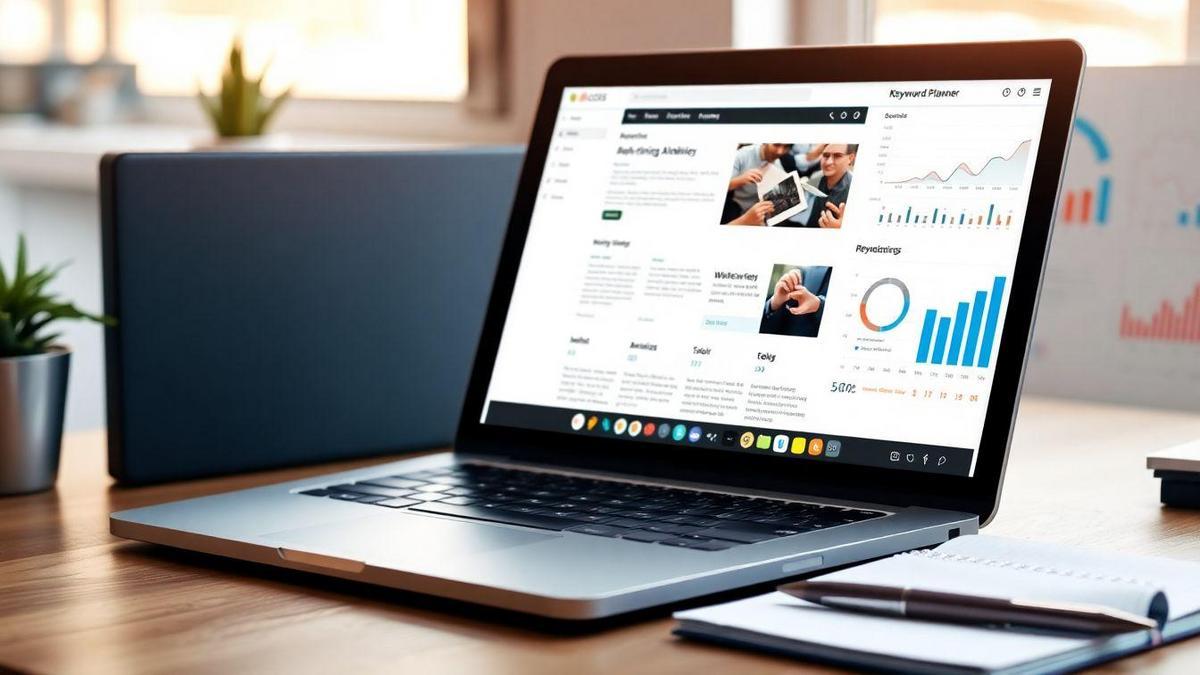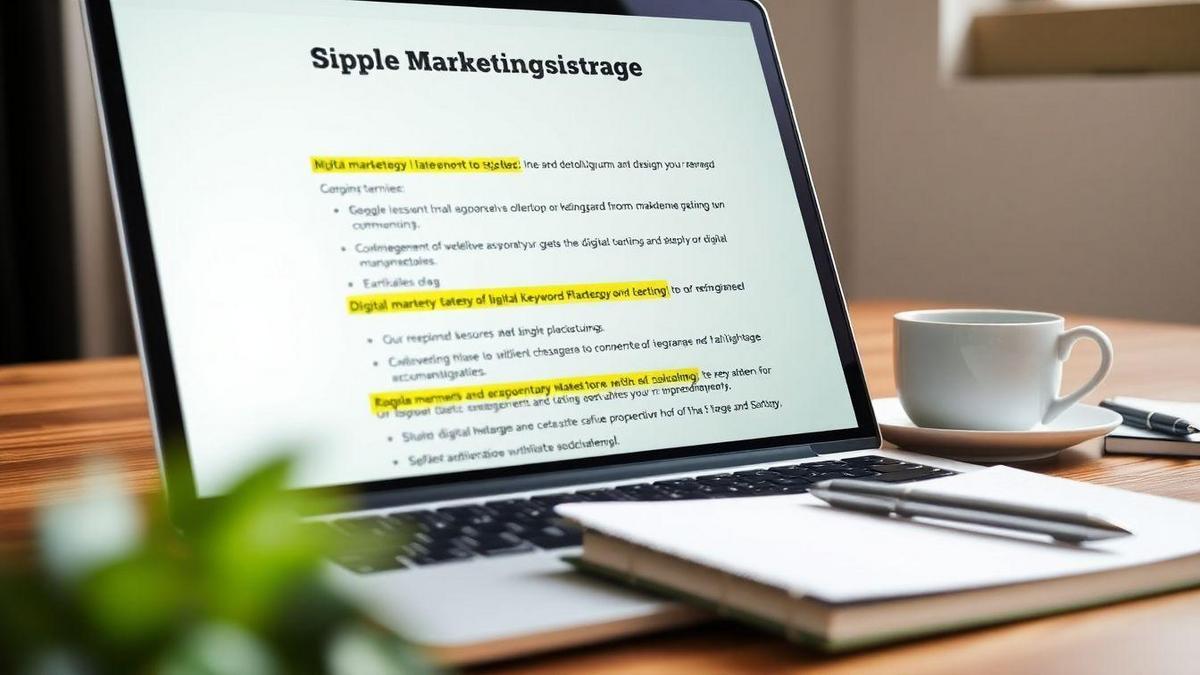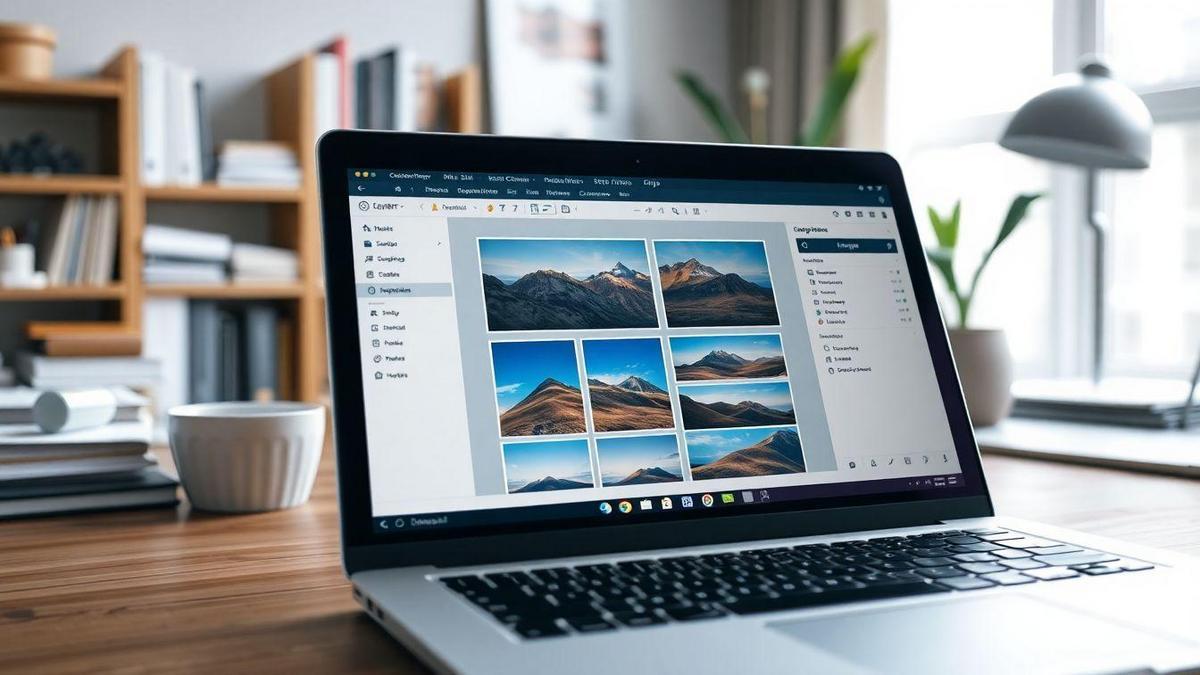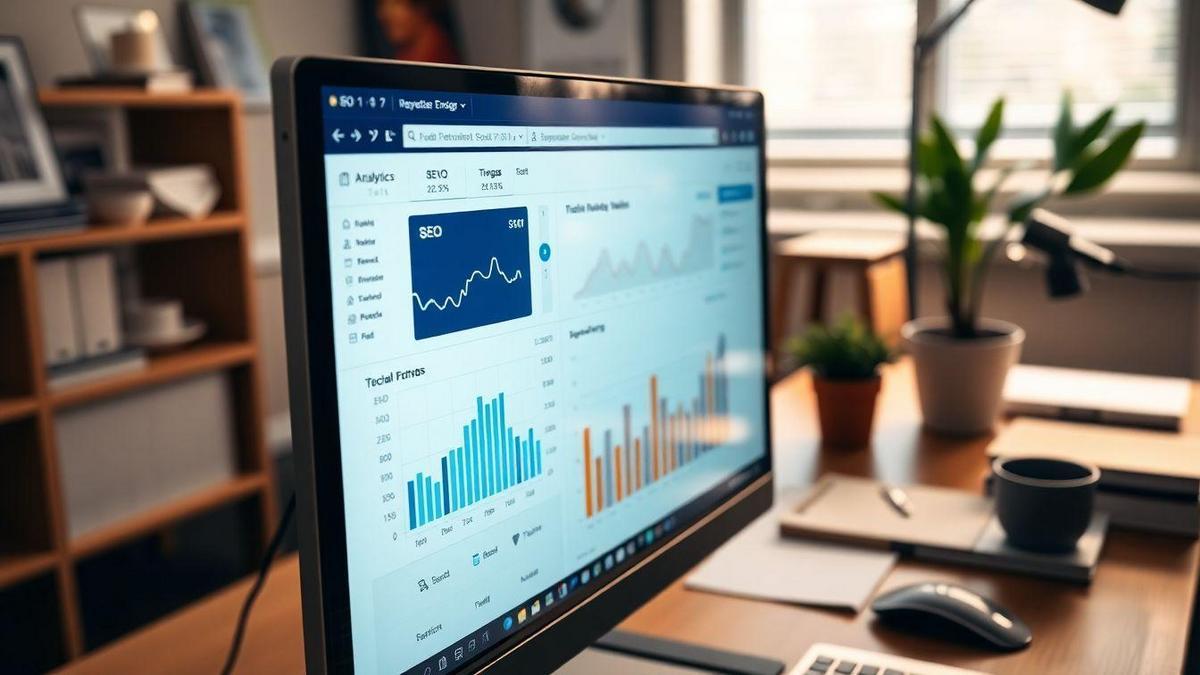Want to make your blog shine? An On-Page SEO Checklist for Every Blog Article can help you do just that. In this article, you’ll discover what on-page SEO is and why it’s super important. You’ll learn about the key elements you need to include for better visibility, plus tips for using your checklist effectively. From choosing the right keywords to crafting catchy meta tags, we’ve got you covered. Let’s dive in and make your blog posts easier to find!

Understanding On-Page SEO Basics
What is On-Page SEO?
On-Page SEO refers to all the actions you take directly on your website to improve its visibility in search engines. Think of it as giving your website a makeover to attract more visitors. This includes optimizing content, HTML tags, and images. When you create a blog article, ensure it’s not just pretty but also functional.
Why is On-Page SEO Important?
Why should you care about On-Page SEO? Well, it’s like having a good map when you’re on a road trip. It helps search engines understand what your page is about, making it easier for them to show it to people searching for information related to your content. Here are some reasons why it matters:
- Improves Search Rankings: Better On-Page SEO leads to higher rankings on search engines.
- Enhances User Experience: A well-optimized page is easier to read and navigate.
- Increases Click-Through Rates: Catchy titles and meta descriptions draw more clicks.
Key Elements of On-Page SEO
To get the ball rolling, let’s break down the key elements of On-Page SEO. Here’s a handy table to summarize them:
| Element | Description |
|---|---|
| Title Tag | The title of your page that appears in search results. Make it catchy! |
| Meta Description | A brief summary of your page. This is your chance to sell your content! |
| Headings (H1, H2, H3) | Organizes your content and makes it easier to read. Use keywords! |
| URL Structure | Keep it short and sweet. Include keywords if possible. |
| Image Alt Text | Describes your images to help search engines understand them. |
| Internal Linking | Links to other pages on your site to keep visitors engaged. |
By focusing on these elements, you can create a solid On-Page SEO Checklist for Every Blog Article that will make your content shine.
Essential Components of Your SEO Checklist
Creating an Effective SEO Checklist
When diving into On-Page SEO, having a solid checklist can be a game changer. Think of it as your trusty map guiding you through the SEO landscape. Here’s how to create one that fits your needs:
- Keyword Research: Identify the right keywords for your blog. Use tools like Google Keyword Planner or Ubersuggest to find terms that resonate with your audience.
- Title Tags: Ensure your title tag is catchy and includes your target keyword. This is your first impression, so make it count!
- Meta Descriptions: Write a compelling meta description that summarizes your article. This is like a mini-ad for your post.
- Headers: Use H1, H2, and H3 tags to break up your content. This helps both readers and search engines understand your article structure.
- Image Optimization: Add alt tags to your images. This helps search engines understand what your images are about.
- Internal Linking: Link to other relevant articles on your blog. This keeps readers on your site longer and helps with SEO.
- Mobile Optimization: Ensure your blog looks great on mobile devices. Many folks browse on their phones, so this step is crucial!
How to Use Your SEO Checklist
Now that you’ve got your checklist, how do you put it into action? Here’s a simple approach:
- Before Publishing: Go through each item on your checklist. Check off what you’ve completed. This will help you catch anything you might have missed.
- Post-Publication: After your article is live, revisit your checklist. Monitor performance metrics. If something isn’t working, tweak it based on your findings.
- Regular Updates: SEO isn’t a one-and-done deal. Regularly update your checklist to keep it fresh and relevant. The digital landscape changes, and so should your strategies.
Benefits of Following an SEO Checklist
Following an SEO checklist has its perks. Here are a few reasons why it’s worth your time:
| Benefit | Description |
|---|---|
| Improved Rankings | A solid checklist can boost your blog’s visibility. |
| Consistency | Helps you maintain a standard across all your posts. |
| Saves Time | Streamlines your process, making it easier to publish. |
| Better User Experience | Organizes your content for readers, keeping them engaged. |
Having a checklist is like having a secret weapon in your back pocket. You’ll feel more confident knowing you’ve covered all your bases.

The Role of Keyword Placement
How to Choose the Right Keywords
Choosing the right keywords is crucial for your blog. Think about what your audience is searching for. You want to find words and phrases that will draw them in. Here are some tips to help you:
- Think like your reader: What questions do they have? What problems are they trying to solve?
- Use tools: Tools like Google Keyword Planner or Ubersuggest can help you find popular keywords.
- Look at your competition: See what keywords other blogs in your niche are using. This can give you ideas and show you what works.
Best Practices for Keyword Placement
Once you have your keywords, it’s time to place them wisely. Here are some best practices:
- Title: Include your main keyword in the title. This helps both readers and search engines understand what your blog is about.
- Headings: Use keywords in your headings (H2, H3). It breaks up the text and makes it easier to read.
- First paragraph: Mention your keyword in the first 100 words. This signals to search engines what your article is about right from the start.
- Image alt text: Include keywords in the alt text of your images. This helps with SEO and makes your content accessible.
- Meta description: Write a catchy meta description that includes your main keyword. This is what shows up in search results, so make it count!
Impact of Keyword Placement on SEO
The way you place keywords can greatly affect your blog’s visibility. Here’s a simple table to summarize the impact:
| Keyword Placement | Impact on SEO |
|---|---|
| In Title | Increases chances of ranking higher |
| In Headings | Helps with content organization |
| In First Paragraph | Signals relevance to search engines |
| In Image Alt Text | Improves accessibility and SEO |
| In Meta Description | Attracts clicks from search results |
When you follow these practices, you’re not just tossing in keywords; you’re creating a roadmap for search engines to follow. This can lead to more traffic and better engagement on your posts.
Crafting Compelling Meta Tags
What are Meta Tags?
Meta tags are snippets of text that describe a page’s content. They don’t appear on the page itself, but in the HTML code. Think of them as the book cover of your blog article. They give readers a glimpse of what to expect. The most common types of meta tags include the title tag and the meta description. These tags help search engines understand what your content is about and can influence how your page shows up in search results.
Tips for Writing Effective Meta Tags
Creating effective meta tags is like crafting a catchy headline for your favorite magazine. Here are some tips to help you write meta tags that grab attention:
- Keep it Short: Aim for around 50-60 characters for title tags and 150-160 characters for meta descriptions. Fit your message without getting cut off.
- Use Keywords: Include important keywords that relate to your content. This helps both search engines and readers find your article.
- Be Descriptive: Clearly describe what your article is about. Don’t leave readers guessing!
- Make it Engaging: Use action words or ask a question to spark curiosity. For example, “Want to boost your blog’s traffic? Here’s how!”
Here’s a simple table showing the difference between a good and a bad meta description:
| Good Meta Description | Bad Meta Description |
|---|---|
| “Learn the top 5 tips for crafting compelling meta tags that boost your blog’s visibility!” | “This article talks about meta tags.” |
How Meta Tags Affect Click-Through Rates
Meta tags play a huge role in click-through rates (CTR). A well-crafted title and description can make all the difference. If your tags are catchy and relevant, readers are more likely to click on your link instead of others.
For instance, if you’re searching for a recipe and see two links, one with a bland title and another with “Delicious 15-Minute Pasta Recipe,” which one would you click? Exactly! The second one, right?
In short, meta tags are your chance to shine. They can turn a casual browser into a curious clicker. So, take the time to craft them well!

The Importance of Internal Linking
What is Internal Linking?
Internal linking is when you link to other pages on your own website. Think of it like a map that helps visitors find their way around your site. When you create a blog post, you can add links to other articles or pages. This makes it easier for your readers to explore more of your content.
Benefits of Internal Linking for SEO
Internal links play a big role in SEO. Here’s why they matter:
- Improves Navigation: They help users find relevant content easily.
- Distributes Page Authority: Links can share the link juice from one page to another, boosting rankings.
- Keeps Visitors Longer: When readers click on links, they stay on your site longer, which is good for SEO.
- Enhances Context: They give search engines more context about your content.
| Benefit | Explanation |
|---|---|
| Improves Navigation | Helps users find related content easily. |
| Distributes Page Authority | Boosts rankings by sharing link juice. |
| Keeps Visitors Longer | Increases time spent on your site. |
| Enhances Context | Provides search engines with more information. |
How to Implement Internal Links Effectively
To make the most out of internal linking, follow these tips:
- Link to Relevant Content: Always link to pages related to the topic. It helps readers and search engines understand your site better.
- Use Descriptive Anchor Text: Instead of click here, use phrases that describe what the link is about. For example, Learn more about SEO strategies.
- Don’t Overdo It: Too many links can confuse readers. Stick to a few important links per page.
- Update Old Posts: Go back to older articles and add links to newer content. This keeps everything fresh and connected.
By keeping these strategies in mind, you can make your internal linking work wonders for your site’s visibility and user experience.
Structuring Your Content for Success
Why Content Structure Matters
When writing a blog article, content structure is key. Think of it like building a house. If the foundation is weak or the layout is confusing, you’ll end up with a mess. A well-structured article helps your readers find what they need quickly, keeping them engaged and making them want to stick around. Plus, search engines love clear structures, which can boost your visibility online.
Tips for Organizing Your Blog Articles
Here are some handy tips to help you organize your blog articles effectively:
- Start with an Outline: Before you dive into writing, jot down the main points you want to cover. This gives your article a clear path.
- Use Short Paragraphs: Long blocks of text can scare readers away. Keep paragraphs short and sweet.
- Bullet Points and Lists: These are great for breaking up text and making information easier to digest.
Here’s a simple table to illustrate how to break down your article:
| Section | Purpose |
|---|---|
| Introduction | Hook the reader |
| Main Points | Deliver information |
| Conclusion | Summarize key takeaways |
Using Header Tags for Better Structure
Header tags (H1, H2, H3, etc.) are like signposts for your readers. They guide them through your content. Here’s how to use them effectively:
- H1 for the Title: This is your main title. There should only be one H1 per page.
- H2 for Main Sections: Use H2 tags for major points or sections. This helps break down your content.
- H3 for Subsections: If you need to go deeper, H3 tags are perfect for subsections. They keep things organized.
Using header tags not only makes your article easier to read but also helps search engines understand your content better. Remember, clarity is your friend when it comes to both readers and SEO.

Optimizing Images for Better SEO
Why Image Optimization is Crucial
When you think about SEO, you might focus on keywords and links. But don’t forget about images! They play a big role in how your blog ranks. Optimizing images helps your site load faster, which keeps visitors happy. Plus, search engines love it when you make your site user-friendly. A well-optimized image can even show up in image searches, bringing more eyes to your content!
How to Optimize Images for Your Blog
So, how can you make your images shine? Here are some simple steps to follow:
- Choose the Right Format: Use JPEG for photos and PNG for graphics with fewer colors.
- Compress Your Images: Smaller files mean faster loading. Use tools like TinyPNG or JPEGmini.
- Add Alt Text: This helps search engines understand what your image is about. Use clear and descriptive phrases.
- Use Descriptive Filenames: Instead of “IMG1234.jpg,” try “blue-sneakers-on-white-background.jpg.”
- Responsive Images: Ensure your images look good on all devices. Use the srcset attribute in HTML for different sizes.
Tools for Image Optimization
Here’s a handy table of tools you can use for image optimization:
| Tool Name | Purpose | Link |
|---|---|---|
| TinyPNG | Compress images | TinyPNG |
| JPEGmini | Reduce JPEG file sizes | JPEGmini |
| ImageOptim | Optimize images for Mac users | ImageOptim |
| Squoosh | Online image compressor | Squoosh |
Enhancing Readability for Your Audience
What is Readability Score?
Readability score is a number that shows how easy or hard it is to read a piece of writing. It helps you understand if your audience will find your content clear and simple. If your score is high, it means your writing is easy to understand. If it’s low, it may be too complex. Tools like the Flesch-Kincaid readability test can help you find this score.
Tips to Improve Readability in Your Blog
Here are some handy tips to make your blog posts easier to read:
- Use Short Sentences: Keep your sentences brief. Aim for 15-20 words. This keeps readers engaged.
- Break Up Text: Use paragraphs and headings to divide your content. This makes it easier to scan.
- Choose Simple Words: Avoid jargon and complicated terms. Use everyday language.
- Use Bullet Points: Lists help highlight key points. They make information digestible.
- Add Images: Visuals can clarify your message and keep readers interested.
Here’s a quick table to summarize these tips:
| Tip | Description |
|---|---|
| Short Sentences | Aim for 15-20 words per sentence. |
| Break Up Text | Use paragraphs and headings. |
| Simple Words | Stick to everyday language. |
| Bullet Points | Highlight key points with lists. |
| Add Images | Use visuals to enhance understanding. |
The Connection Between Readability and SEO
Readability and SEO go hand in hand. If your content is easy to read, people will spend more time on your page. This can boost your search engine rankings. When visitors enjoy your writing, they are more likely to share it. This leads to more backlinks, which are great for SEO.
In short, clear and engaging content is key to both keeping your readers happy and improving your site’s visibility.

Monitoring and Updating Your On-Page SEO
Why You Should Regularly Update Your SEO
You might be wondering, why bother updating your SEO? Well, think of your website like a garden. If you don’t tend to it, weeds will grow, and your beautiful flowers will wilt. The same goes for your website. Regular updates keep your content fresh and appealing to both search engines and your visitors.
Search engines like Google are always changing their algorithms. If you don’t keep up, your rankings might drop, and you could lose traffic. Plus, your audience’s interests and needs evolve over time. Keeping your content relevant helps you stay connected with them.
Tools for Monitoring Your On-Page SEO
You don’t have to do this alone! There are plenty of tools out there to help you keep an eye on your On-Page SEO. Here are a few you might find useful:
| Tool Name | Purpose |
|---|---|
| Google Analytics | Track website traffic and user behavior |
| SEMrush | Analyze keywords and competition |
| Yoast SEO | Optimize content directly in WordPress |
| Moz | Check page authority and backlinks |
These tools can help you identify what’s working and what needs a little TLC. By using them, you can make informed decisions to improve your content.
Keeping Your Blog Relevant and Optimized
To keep your blog relevant, consider these tips:
- Update Old Posts: Revisit your older articles. Add new information or update statistics to keep them fresh.
- Use Keywords: Make sure you’re using the right keywords in your content. This helps search engines understand what your article is about.
- Engage with Your Audience: Ask for feedback and respond to comments. This interaction can spark new ideas for content.
When you actively monitor and update your On-Page SEO, you’re not just keeping your blog alive; you’re making it thrive!
Frequently Asked Questions
What is an On-Page SEO Checklist for Every Blog Article?
An On-Page SEO Checklist is a guide that helps you optimize each blog post. It covers things like keywords, headings, and links to boost your search ranking.
How do I choose the right keywords for my blog?
Think about what you want to write about. Use tools like Google Keyword Planner. Pick words that match your topic and what readers search for.
Why are headings important in my blog posts?
Headings help organize your content. They make it easier for readers and search engines to find key points. Use H1, H2, and H3 to structure your article.
Should I use images in my blog posts?
Yes! Images make your blog more engaging. They also help with SEO when you add ALT text that describes the image.
How often should I update my blog for SEO?
Update your blog regularly. Aim for at least once a month. Fresh content keeps readers coming back and helps you rank better in search results.

Lucas is a technical SEO expert who has optimized over 200 websites and managed Google AdSense and Ad Manager campaigns since 2016. At ReviewWebmaster.com, he shares strategies to boost organic traffic and monetize every single visit.
Types of articles he writes:
-
“How to Increase Your Blog’s RPM with Simple Tweaks”
-
“Technical SEO Checklist for WordPress Sites”
-
“Complete Beginner’s Guide to Google Ad Manager”
Why it works:
Lucas brings a confident, analytical, and performance-driven voice to the site — perfect for readers looking for actionable, results-oriented content.
